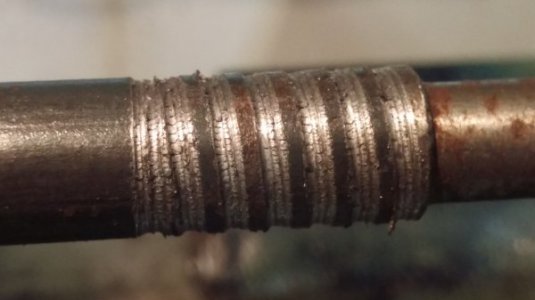H
Hukshawn
Forum Guest
Register Today
The threading dial moves one tooth for each revolution of the leadscrew. Any integer will work but a multiple of two is most convenient. One would work ok.
Suggestion: count the TPI of your leadscrew and then set up to cut that TPI. Then the spindle and the leadscrew should be running at the same speed and you can start on any leadscrew thread.
So I tried that, and got this hot mess...



